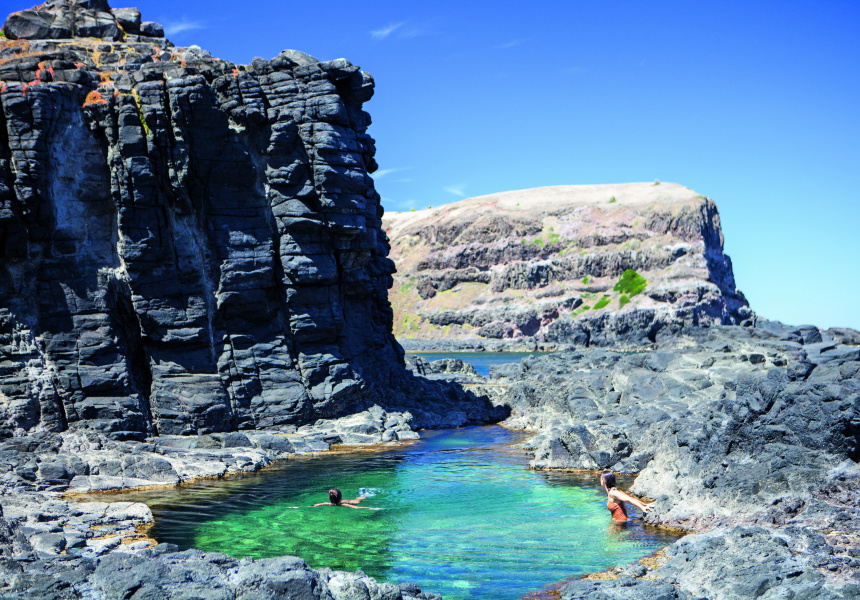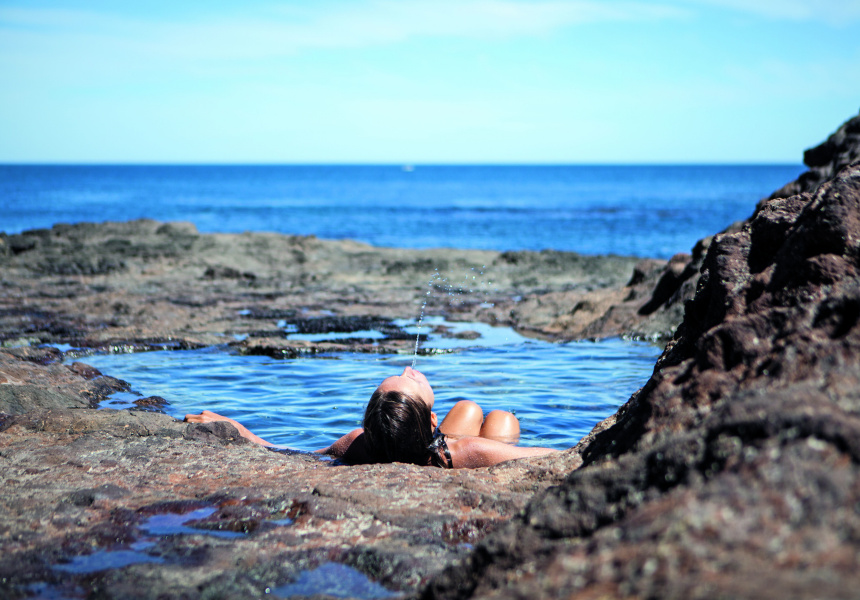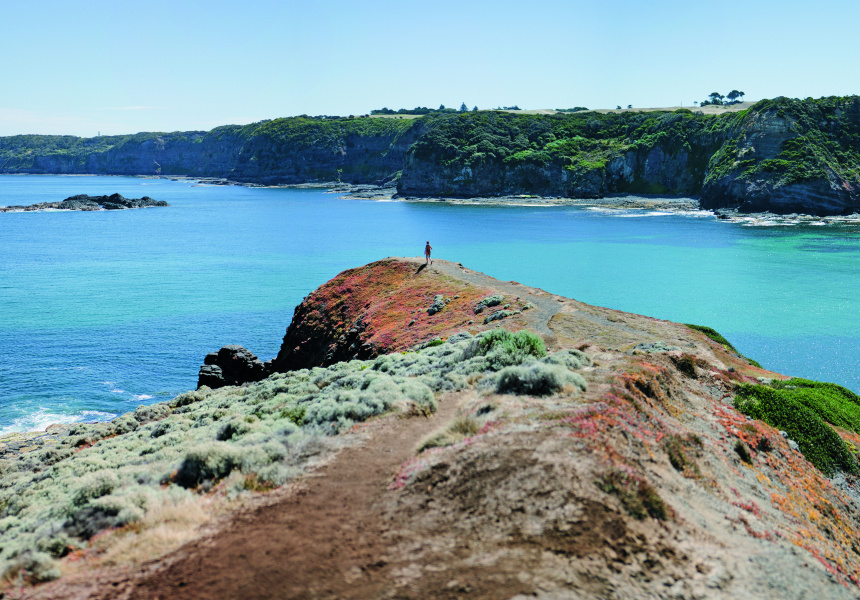Caroline Clements and Dillon Seitchik-Reardon travelled around Australia in search of the country’s most distinctive, remarkable swimming spots. It’s all documented in a book that’s part travel guide, part photo essay, and part cultural study.
The eastern side of Port Phillip is probably most famous for its bluechip towns, Portsea and Sorrento, but they’re hardly a complete representation of what the Mornington Peninsula has to offer.
A closer look reveals the true identity of this hook-shaped piece of land as slow-paced and down to earth. The landscape is dominated by rolling hills, organic farms, and some of the state’s best wineries. Quality is a unifying theme around here, so it should come as no surprise that Bushrangers Bay is a top-shelf swimming option.
Stay in the know with our free newsletter. The latest restaurants, must-see exhibitions, style trends, travel spots and more – curated by those who know.
SIGN UPThe basalt coastline is quite unlike anywhere else in the area, or even the state. Volcanic black rocks emerge from clear, blue water. Deep pools are filled at high tide and slowly warm throughout the day. It has a distinct look and feel, so you can imagine how our eyes popped out of our heads when we saw this secret spot featured in the 2009 film adaptation of Where the Wild Things Are. Indeed, it seems like a natural place for a wild rumpus, and you’ll see lots of kangaroos if you arrive early in the morning.
We start our trip from the Cape Schanck Lighthouse car park, from where it’s a three-kilometre one-way walk to Bushrangers Bay. Good snacks being essential, we stop for supplies at Hawkes vegetable and farm store on our way down, then follow the well-defined track along the top of cliffs and through tunnels of coastal banksia.
The trail eventually emerges onto the beach to reveal a storybook landscape of hulking, dark headlands. Don’t be surprised to see waves exploding onto the beach, as it is exposed to a constant barrage of swells from the south.
We prefer the safety and beauty of the nearby tidal rock pools. To find them, follow the beach east toward the rocky headlands. The most prominent feature is Elephant Rock, and the best pools are distributed around its base, on the left-hand side. The water is always clear here and often a few degrees warmer than the ocean – Victoria’s version of a spa bath. Remember, this is a low-tide-only spot, so take a moment to make sure that rogue waves aren’t crashing into the pools before jumping in.
It’s easy to spend the day exploring these pools and climbing the headlands. We feel like we discover a new swim or rock arch every time we visit. The natural baths come in many shapes and sizes, some small enough just for one, but all with million-dollar views – after all, we’re on the Mornington Peninsula. All wild things welcome.
Best time to visit
Low tide on a hot summer’s day when a north-easterly wind is blowing.
How to get there
From the Cape Schanck Lighthouse car park (420 Cape Schanck Road, Cape Schanck), follow signs to Bushrangers Bay. Walk east along clifftops for about three kilometres before dropping down to the beach.
Access
Easy. It’s a 40-minute walk along a well-defined path to the beach. Rocks are sharp, slippery and uneven once you get to the tidal pools. Be careful of your footing and take it slowly.
Must bring
Lunch, and lots of water. It can get stinking hot among the black rocks and you will be amazed at how much water you can drink.
Local knowledge
This spot is suitable for low-tide swimming only. Try to arrive while the tide is still dropping so you can enjoy your swim for as long as possible.
Broadsheet is aware of a drowning at Bushrangers Bay on January 13, 2021. Please note the beach and surrounding area, including the rock pools featured in this story, are not patrolled. Conditions in the rock pools can be hazardous; they should only be visited at low tide.
Images and copy from Places We Swim by Caroline Clements and Dillon Seitchik-Reardon, Hardie Grant Travel, RRP AUD $39.99. Available in stores nationally and online. For more follow Caroline and Dillon on Instagram via @placesweswim.
This article was updated on January 14, 2020.



